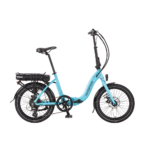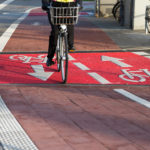C
Cyclezee
Guest
I am wondering what members feel is the correct number of gears to have on an electrically assissted bike and why?
The NuVinci CVT hub only was 3850 gms, but later reduced to approximately 3200 gms.Kirstin mentions the weight of the Alfine 8 hub, but it is no where near as heavy as a Nu Vinci CVT, I had a good look at one when I was in China a few weeks ago and although I don't know the weight, it is a heavy lump.
I agree that an assist motor just for the hills does make sense, and in Britain our original assist speed limit was 12 mph. Heinzmann make a motor for 11.5 mph in standard wheels and there is one eZee model with assist only to 12 mph, both these with great hill climb ability.But supposing, just supposing, we were to relax our seeming fixation with the legal maximum speed and, instead, were prepared to settle for less. How much slower would we have to go before one gear became realistic? With a gear of 54" (about the same as single speed mountain bikers use) 60RPM produces a speed of nearly 9.6mph and, with 60", about 10.6mph. Is that sort of thing really so horrid? If the legal maximum speed were 11mph would none of us bother with electric bikes? There are more, far more, electric bikes in China than elsewhere and the legal maximum is 12.5mph.
The original 12 mph limit changed in 1988, part of the harmonisation of transport with the EU. There are further harmonisation steps planned in the near future for e-bikes.flecc
Intriguing that it used to be 12mph. When was it changed to 15mph and, perhaps more interesting, why?
So that's why the Chinese have so many mega-wattage motors on the market! Perhaps the apparent official tolerance of such grossly overpowered bikes originates in the speed at which road infrastructure must be built to keep pace with rapid economic growth and car ownership. From the planners' perspective, anything (almost) on two wheels may be worth tolerating if it means fewer motor vehicles.





